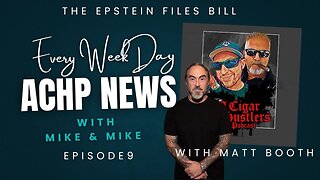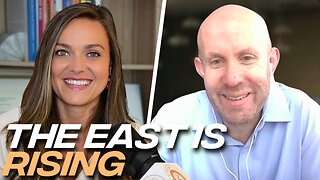Premium Only Content

How to Use Analytics to Improve Your Content Strategy (A Comprehensive Guide)
In today’s digital landscape, content is king. However, simply creating high-quality content isn’t enough. To truly maximize its potential, you need to leverage analytics. By understanding how your audience interacts with your content, you can make informed decisions that enhance engagement, boost traffic, and ultimately drive conversions. This article will guide you through the process of using analytics to refine and improve your content strategy.
Understanding Content Analytics
Before diving into how to use analytics for your content strategy, it's essential to grasp what content analytics entails. In essence, content analytics involves collecting and analyzing data related to how your content is performing. This includes metrics such as page views, time on page, bounce rates, social shares, and conversion rates.
Analytics tools can provide insights into not only the performance of individual pieces of content but also the overall effectiveness of your content strategy. By analyzing this data, you can identify trends, uncover audience preferences, and adjust your strategy accordingly.
Key Metrics to Monitor
To effectively use analytics, it’s important to focus on key performance indicators (KPIs) that align with your goals. Here are several crucial metrics to track:
Page Views: This metric indicates how many times a particular piece of content has been viewed. While it’s a basic measure, high page views can signal content popularity.
Unique Visitors: This metric shows how many distinct users are visiting your content. It helps assess your reach and audience engagement.
Average Time on Page: This metric reveals how long visitors are spending on your content. A longer time usually indicates that the content is engaging and valuable.
Bounce Rate: This indicates the percentage of visitors who leave your site after viewing only one page. A high bounce rate might suggest that your content isn’t resonating with visitors.
Social Shares: Monitoring how often your content is shared on social media can provide insights into its appeal and effectiveness.
Conversion Rate: This measures the percentage of visitors who complete a desired action (such as signing up for a newsletter or making a purchase) after consuming your content.
Tools for Tracking Analytics
To effectively monitor these metrics, you’ll need robust analytics tools. Some popular options include:
Google Analytics: A comprehensive tool that tracks website traffic, user behavior, and conversion rates. It provides a wealth of data to analyze content performance.
Social Media Analytics: Platforms like Facebook, Twitter, and LinkedIn offer their own analytics tools, providing insights into how your content is performing on social channels.
Content Management Systems (CMS): Many CMS platforms, such as WordPress, have built-in analytics features or plugins that allow you to monitor content performance.
Heatmaps: Tools like Hotjar and Crazy Egg provide heatmaps that show where users are clicking and how they’re interacting with your content.
Analyzing Audience Behavior
Once you’ve set up your analytics tools, the next step is to analyze audience behavior. Understanding how your audience engages with your content can inform your strategy moving forward.
Identify Your Audience Segments
Analytics can help you identify different audience segments based on demographics, behavior, and preferences. By segmenting your audience, you can tailor your content to meet the specific needs and interests of different groups. For example:
Demographics: Look at age, gender, and location data to understand who your audience is.
Behavioral Data: Analyze which types of content lead to the most engagement or conversions. This can help you identify what resonates most with your audience.
Referral Sources: Understanding where your traffic is coming from (search engines, social media, direct traffic, etc.) can inform your promotional strategy.
Understand User Journey
Mapping out the user journey is another critical component of audience analysis. This process involves understanding how users navigate through your site and which content pieces lead them to take action. Tools like Google Analytics allow you to visualize user paths, helping you identify bottlenecks or drop-off points in the journey.
By analyzing this data, you can optimize your content to guide users more effectively toward your desired outcomes. For example, if you notice that users frequently drop off after reading a specific blog post, it may indicate a need for more engaging follow-up content or better calls to action.
Read the full blog post here https://www.gerardyadgg.com/2024/10/how-to-use-analytics-to-improve-your.html
-
 42:00
42:00
Based Campwith Simone and Malcolm
4 days agoNYT Brands Divorce as the Cool New Trend for Gen Z Girls
4.34K4 -
 11:43
11:43
VSOGunChannel
18 hours ago $1.12 earnedThe Gun Control the Trump Admin is Fighting For
3.41K6 -
 1:03:30
1:03:30
A Cigar Hustlers Podcast Every Day
1 day agoEpisode 416 Epstein Files w/Matt Booth
3.96K -
 LIVE
LIVE
BEK TV
23 hours agoTrent Loos in the Morning - 11/25/2025
182 watching -
 LIVE
LIVE
The Bubba Army
22 hours agoMAJORIE TAYLOR GREENE QUITS! - Bubba the Love Sponge® Show | 11/25/25
1,560 watching -
 51:11
51:11
ZeeeMedia
15 hours agoBREAKTHROUGH: Nattokinase Dissolves 84% of Amyloid Microclots Within 2 Hours | Daily Pulse Ep 150
31K23 -
 1:12:22
1:12:22
Coin Stories with Natalie Brunell
22 hours agoArnaud Bertrand on Changing World Order: U.S. vs China, Gold, Bitcoin & Dollar Hegemony
19.5K7 -
 40:23
40:23
MetatronHistory
1 day agoI REFUSE To Use BCE/CE And Here is Why
8.07K9 -
 16:00
16:00
Actual Justice Warrior
2 days agoDearborn Muslims Go To WAR With Protesters
11.6K33 -
 16:33
16:33
Code Blue Cam
4 days agoWhen Begging for No Ticket Backfires Immediately
17K17